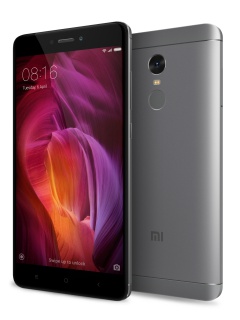ASUS ZenFone 4 Max review: Is a big battery enough?
Overview
The ZenFone 4 Max is the entry-level phone in ASUS' huge ZenFone 4 lineup and, like its name suggests, emphasizes battery life over everything else thanks to a huge 4,100mAh battery. Unusual for this price range, the phone also boasts a dual rear-camera setup, but is that enough to separate it from the deluge of other entry-level smartphones out there? Let's find out.
N.B. It's worth pointing out that in most other regions, the ZenFone 4 Max comes with a 5.5-inch display, and a 5,000mAh battery, but in Singapore that variant is called the ZenFone 4 Max Pro.
| |
| |
| |
| |
| |
| |
| |
| |
| |
| |
| |
|
Design
The ZenFone 4 Max has a safe but forgettable generic design. From the front, its huge bezels, rectangular fingerprint scanner and mirrored capacitive navigation keys make it pretty much indistinguishable from any other entry-level phone from the past five years.

Speaking of that fingerprint scanner, unlike pretty much every other phone out there, pressing the home button won't wake the phone, you need to press the side power button to turn it on first, then scan your fingerprint to unlock it. On the plus side, the fingerprint scanner itself is fairly fast and seems accurate enough.
Turn the phone over and things aren't much better. My review unit is a Deepsea Black color, which is probably the most interesting thing about the phone - it's actually a very dark indigo blue. ASUS describes the phone's build as a 'premium metallic finish', which is just a nice way of saying it's plastic, and there's nothing premium about plastic. The plastic build is a real disappointment, especially when last year's ZenFone 3 Max had an aluminum build. If you want actual metal and not just 'metallic' this time around, you'll have to top up S$100 for the ZenFone 4 Max Pro.

The dual rear camera setup is positioned at the top left corner and sits almost flush with the back of the phone. Before you congratulate ASUS for getting that rear camera to sit flush, it's worth pointing out that the phone itself is quite thick. At 8.7mm, it's one of the fatter phones out there and, for an entirely plastic phone, it's also quite heavy, coming in at 156g.

Both the power button and volume rocker can be found on the right side. The buttons have ASUS' signature concentric circle design on them, and they're actually surprisingly firm, with a satisfying click.
There's a 3.5mm headphone jack on the top of the phone, and a micro-USB port at the bottom. There are speaker grilles on either side of the micro-USB port, but sound only comes out of the right port - the left one is purely decorational.

Overall, the ZenFone 4 Max doesn't look bad, but its thick, hefty plastic build, generic design, massive bezels, and outdated micro-USB port all make it look and feel like a much older phone.
Display & Audio
The ZenFone 4 Max has a 5.2-inch 1,280 x 720 pixels resolution (~282ppi) IPS LCD display. With many entry-level phones now coming with Full HD panels, the HD resolution on the 4 Max doesn't really cut it, especially with a screen of this size. UI elements are noticeably jagged around the edges, and the low resolution is especially obvious when reading text. This will likely be worse on the Max Pro edition which also sports a 720p resolution for its larger 5.5-inch screen.

The display itself is also a little dim, with a noticeably blue tint. Colors look washed-out and contrast is also quite poor. Viewing angles are also bad, and there's a pretty bad color shift when looking at the screen off angle.
Audio from the ZenFone 4 Max comes from the single downward firing speaker at the bottom of the phone. As mentioned above only the right speaker is functional - the left one doesn't do anything. The speaker is reasonably loud at max volume, but there's noticeable distortion and a complete lack of bass. Sound quality actually isn't bad at lower volume levels but I would still use the headphone jack for any serious listening.
UI
The ZenFone 4 Max is running on Android 7.1.1 Nougat with ASUS' ZenUI skin on top.


ZenUI is a pretty big departure from stock Android and seems to complicate a lot of things unnecessarily. It actually reminds me of Samsung's old TouchWiz UI. The notifications shade for example is a mess of icons - the default shade actually has two pages of them (you have to swipe right to see them all). You can manually edit it to show only what you want but it's annoying that you have to do so.


The UI is frustratingly inconsistent too - font sizes change in different menus for no reason, some icons are massive and round, others are square with rounded corners, and ASUS has moved quite a few settings around so they don't always appear where you expect them to be.

Finally, it's worth pointing out that the phone doesn't support 802.11ac Wi-Fi, which means you're stuck with b/g/n bands. The phone also lacks NFC connectivity, so you won't be able to use it with most mobile payment services.
Benchmark Performance
After briefly flirting with Mediatek for last year's ZenFone 3 Max, ASUS is back with Qualcomm this year and the ZenFone 4 Max is powered by a Snapdragon 425 quad-core processor with 3GB RAM and an Adreno 308 GPU.
|
|
|
| |
|
|
|
| |
|
|
|
| |
|
|
|
| |
|
|
|
| |
|
|
|
| |
|
|
|
| |
|
|
|
| |
|
|
|
| |
|
|
|
| |
|
|
|
| |
|
|
|
| |
— |
| — | — | |
— |
| — | — |
SunSpider Javascript
SunSpider JavaScript measures the browsing performance of a device when processing JavaScript. It not only takes into consideration the underlying hardware performance, but also assesses how optimized a particular platform is at delivering a high-speed web browsing experience.
The ZenFone 4 Max isn't the snappiest phone out there, but it should be good enough for most people's browsing habits.

Basemark OS II
Basemark OS II is an all-in-one benchmarking tool that measures overall performance through a comprehensive suite of tests including system, internal and external memory, graphics, web browsing, and CPU consumption.
The ZenFone 4 Max performed much better than last year's ZenFone 3 Max, but fell far short of the 625-powered Xiaomi Mi A1 and Redmi Note 4 (which is priced similar to ZenFone 4 Max).

3DMark Sling Shot
3DMark Sling Shot is an advanced 3D graphics benchmark that tests the full range of OpenGL ES 3.1 and ES 3.0 API features including multiple render targets, instanced rendering, uniform buffers and transform feedback. The test also includes impressive volumetric lighting and post-processing effects. We're running this benchmark in Unlimited mode, which ignores screen resolutions.
The results were similar here, with the ZenFone 4 Max beating last year's ZenFone 3 Max, but falling behind the Mi A1 and Redmi Note 4.
Imaging
While most dual camera setups pair a normal focal length lens with a telephoto lens, ASUS takes a different approach (also favored by LG on the V30+) pairing a standard focal length 16-megapixel, f/2.0 primary lens with a wide-angle 120-degree field of view 5-megapixel secondary lens. There's a slight lag when you switch between lenses, and unlike other dual camera setups, you can't zoom between focal lengths (zooming in with the wide-angle lens just digitally zooms in).
Image quality from the main lens is decent enough for an entry-level phone, but colors are generally on the cooler side and there's noticeable processing throughout the image. On the plus side, details are actually reasonably sharp throughout the image, and the auto-focus is relatively fast and accurate.


On the other hand, the secondary camera's 5-megapixel sensor results in a huge drop in image quality and the wide-angle field of view creates a very obvious fisheye effect, so you should really only use this lens as a last resort - you're much better off standing further back and sticking to the primary lens.


Battery Life
Our standard battery test for mobile phones has the following parameters:
Looping a 720p video with screen brightness and volume at 100%
Wi-Fi and Bluetooth connectivity turned on
Constant data streaming through email and Twitter
The ZenFone 4 Max is fitted with a 4,100mAh unit, which is the same size as last year's disappointing ZenFone 3 Max. Fortunately, switching back to Qualcomm seems to have fixed any battery life issues and the 4 Max performed well in our video looping battery benchmark, lasting just over 13 hours.

ASUS is so confident of the battery life in the ZenFone 4 Max, it will let you use it to charge other devices. Having said that, if you want to charge another phone, you'll have to find a micro-USB to micro-USB/USB Type-C cable, which is pretty rare.
The ZenFone 4 Max supports fast charging but only with the supplied default power adapter. Despite running on a Qualcomm processor, it does not support Qualcomm's Quick Charge standard. Using the default adaptor, it took about four hours to charge from 0 to full, which is actually quite slow.
Conclusion

When I review entry-level phones, I don't expect much and I'm conscious of the fact that I'm not the target audience. But even with that in mind, and taking into consideration its affordable S$258 price tag and great battery life, the ZenFone 4 Max is hard to recommend. When even the S$150 Nokia 2 has an aluminum frame on it, there's absolutely no reason why the ZenFone 4 Max should be entirely plastic. The year old Xiaomi Redmi Note 4 costs S$1 more than the ZenFone 4 (you can actually find it much cheaper now) and boasts a full metal build, a larger, higher resolution display, a better rear camera, a more powerful processor, and 802.11ac Wi-Fi connectivity.
Even when compared to last year's ZenFone 3 Max, other than the better processor and dual rear camera (of which the secondary lens is of questionable use), it's hard to say if the ZenFone 4 Max is an upgrade at all - at least last year's ZenFone 3 Max had an aluminum build.
If all you care about is battery life, the ZenFone 4 Max may be the phone for you (although even then, you should take a look at the Nokia 2), but if design, display, camera, performance, or features like NFC and 802.11ac Wi-Fi (which honestly should be standard on all phones by now) are at least somewhat important, look elsewhere.









